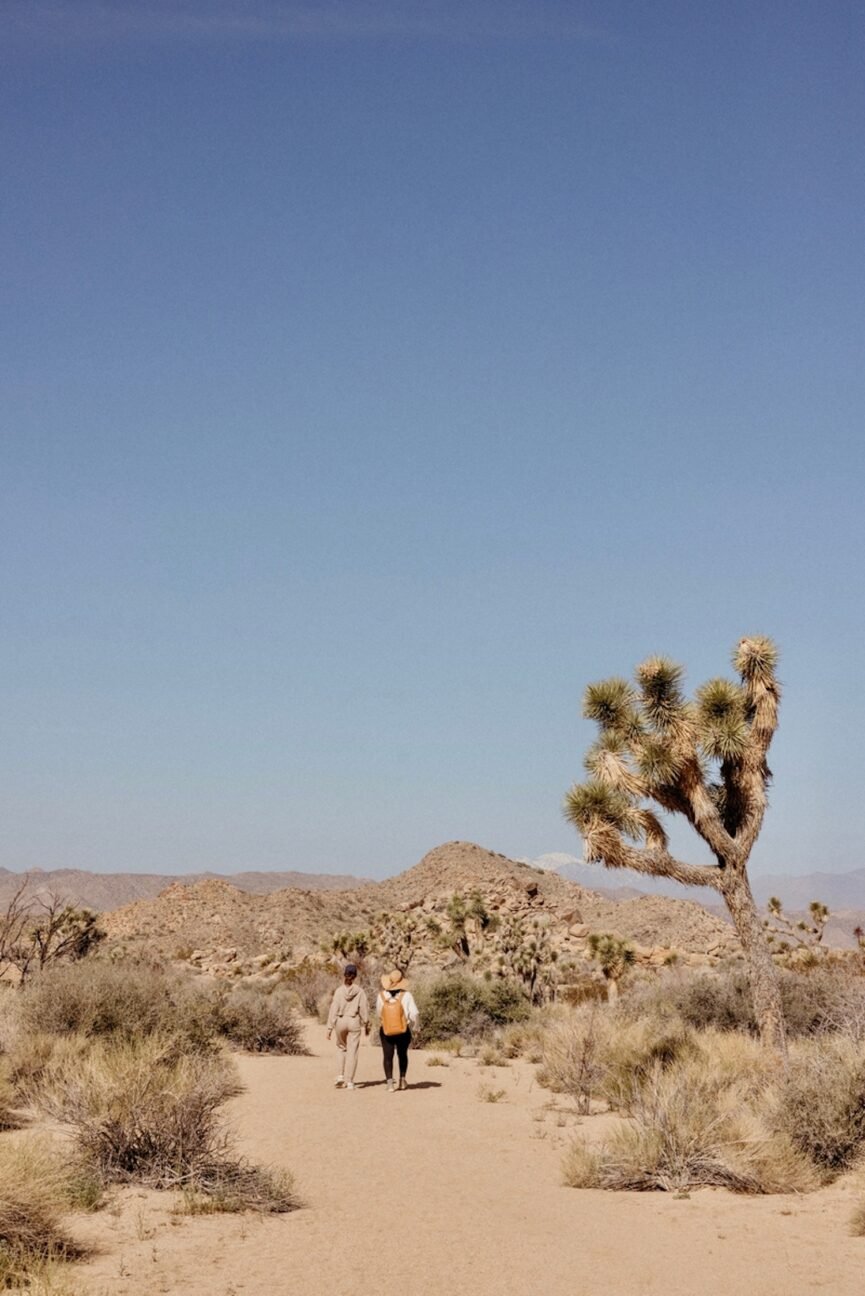
It’s easy to forget that walking can be something other than a means to an end. We walk to the coffee shop, to finish an audiobook, to squeeze in movement between meetings. Even our so-called leisure walks are often tracked, optimized, and paired with a podcast—yet another task to complete. But what if walking became a way of being instead of doing? More than just a fitness tool, walking for mental health invites us to slow down, look up, and re-enter the world with presence.
I’ve always been a walker. Growing up, my mom would drag me and my sisters on weekend 10-mile walks (this was before we learned to appreciate the beauty of a few hours of uninterrupted time together). Then, when I lived in Paris, I’d spend afternoons post-class wandering the streets. No destination, no step count, and no voice in my ear telling me how to improve. Of course, then the pandemic happened, and like many, these walks became not just a joy but a lifeline—a reminder that the world still pushed onward despite everything else around me set on pause.
And while many of my wellness habits ebb and flow, walking has remained a constant. It’s freeing in a way to approach something with no purpose at all. Just a soft drift through the neighborhood or a quiet trail, where the only goal is to notice what’s blooming, feel the air shift, and listen—to the birds, the breeze, or my own thoughts coming gently back to me. In a season where so much feels fast and fractured, these slow strolls have become my way back to something whole.


Why We’re Rethinking Movement
For years, the Hot Girl Walk has ruled our Instagram feeds—a brisk, purposeful stride fueled by empowerment and endorphins. It’s fitness-forward, goal-driven, and undeniably motivating. But even this celebratory movement can start to feel like another item on the to-do list, another box to check in an already full day. When self-care becomes another task, it loses its nourishing power.
That’s why a gentler alternative is quietly gaining ground—a slower, softer way to move that isn’t about speed or steps, but about savoring the simple act of walking itself. This shift aligns with a broader cultural impulse to romanticize everyday moments, to find beauty and meaning in the ordinary rhythms of life. Instead of rushing toward the next goal, we’re learning to slow down and reconnect—to our bodies, our surroundings, and the present moment itself.
Walking as a Mental Reset
There’s a reason walking has long been prescribed as a respite for the restless mind. Research has shown that even a short daily walk can reduce symptoms of anxiety and depression and support nervous system regulation. But the real magic happens when we let go of pace and direction—when walking becomes less about performance and more about presence. This is where walking for mental health takes root: not in the miles logged, but in the moments noticed.
A slower walk gives the mind space to breathe. Instead of racing past your thoughts, you meet them gently, giving yourself time to feel, reflect, and recalibrate.
A 2019 study found that spending just 20 to 30 minutes in a natural setting—whether walking or sitting—significantly reduced levels of cortisol, the body’s primary stress hormone. The researchers emphasized that the greatest stress-reducing benefits occurred within this time frame, with additional time yielding diminishing returns.
A slower walk gives the mind space to breathe. Instead of racing past your thoughts, you meet them gently, giving yourself time to feel, reflect, and recalibrate. Often, I return from a walk with my shoulders softened and my breath a little deeper—not because I pushed myself, but because I let myself go slow. In a world that moves fast, choosing to stroll becomes its own quiet rebellion.
Movement as Mindfulness
Mindfulness doesn’t always require stillness (take it from a busy mom who swears by “micro-moments” of mindfulness). Sometimes, it looks like putting one foot in front of the other and paying attention as you go. A slow walk offers the perfect opportunity to tune back in.
- Start by noticing your senses. The feeling of sunlight on your arms, the sound of distant traffic, the smell of freshly cut grass (my favorite).
- Leave your phone at home. Or, at the very least, slip it into your pocket and resist the urge to document.
- Instead of following a route, let curiosity guide you. Turn down a street you’ve never walked, pause to look closer at a tree, admire a garden, or pet a cat along the way.
These small shifts create space. Space to think clearly, to feel without distraction, to simply exist without expectation. And in that space, you may find what so often feels just out of reach: calm, clarity, and a renewed connection to yourself. In its quiet simplicity, mindful walking becomes a gentle practice in being exactly where you are.
Walking for Creativity and Inspiration
Writers, artists, and thought leaders have long turned to walking as a creative ritual. Virginia Woolf walked through London to untangle her thoughts. Thoreau believed walking opened the door to his best ideas. Even Steve Jobs was known for holding walking meetings—trusting that movement would spark innovation. There’s something about being in motion, yet untethered, that invites inspiration to arrive unannounced.
I’ve felt this myself on countless quiet strolls. Just yesterday afternoon, I slipped out for a walk without my phone, hoping to clear a mental fog I couldn’t quite name. I wandered, letting the breeze and my breath steady me, and somewhere between one blooming peony and the next, the idea I’d been circling all morning finally landed. Not because I chased it—but because I made space for it to find me.
In this way, walking for mental health becomes more than emotional regulation—it’s also creative nourishment. It gives our ideas room to breathe, our emotions room to rise, and our minds a rare moment of openness. Some days, it’s the simplest way back to ourselves.
Seasonal Walking: Let Nature Guide You
One of the most beautiful things about walking slowly is how it teaches you to notice. The scent of jasmine in June. The way sunlight slants differently in late August. A breeze that carries just the hint of cooler days to come. These quiet details often go unseen when we’re rushing—but they’re everywhere, waiting for us to look up.
Letting nature mark your time can become its own mental health practice. It grounds you in something cyclical, dependable, and bigger than yourself. Try walking at golden hour in early summer, when everything is soft and glowing. Or stroll through crisp October mornings without music, letting silence feel full instead of empty. Each season offers its own invitation—your only job is to say yes.
How to Start Your Own “No-Agenda Walk” Ritual
Think of this as a ritual, not a routine. A moment that asks nothing of you but openness.
- Leave the headphones at home
- Don’t plan your route
- Go slower than usual
- Let yourself pause, observe, sit, and breathe
There’s no wrong way to wander. This is your time to feel more like yourself—unrushed, unfiltered, and fully here.
A Softer Kind of Self-Care
There’s power in doing something for no other reason than it feels good. A walk with no destination, no playlist, and no productivity goal might be the most radical form of rest. It reminds us that we don’t always have to chase or achieve—we can simply be.
When we embrace walking for mental health, we give ourselves permission to soften, to notice, and to belong more fully to the world around us. Sometimes, the most meaningful self-care is the simplest: a quiet stroll, breathing deeply, and the decision to be present for it all.
The post Forget Step Counts—Here’s How I Turned Walking Into a Form of Therapy appeared first on Camille Styles.
Camille Styles










